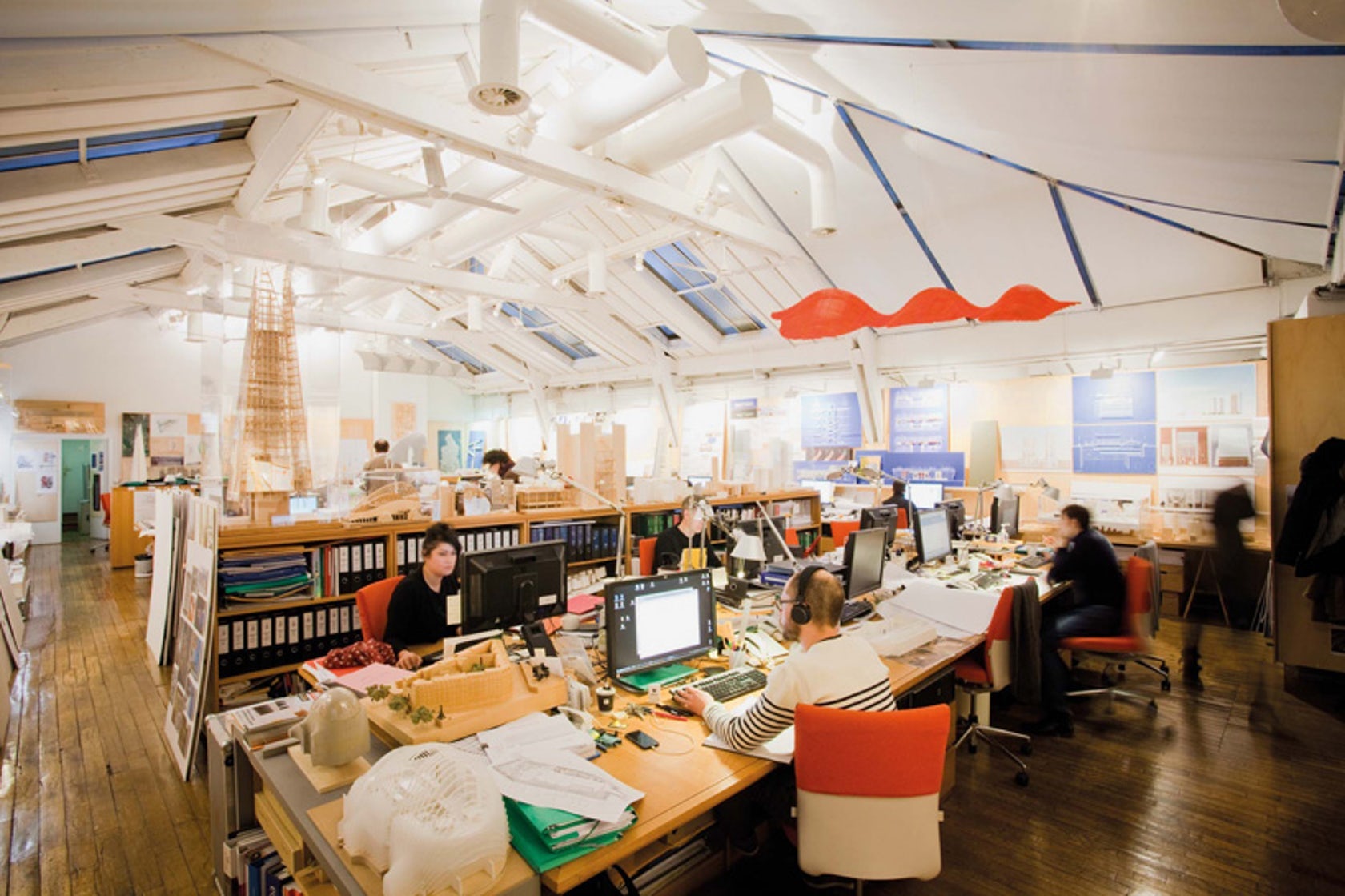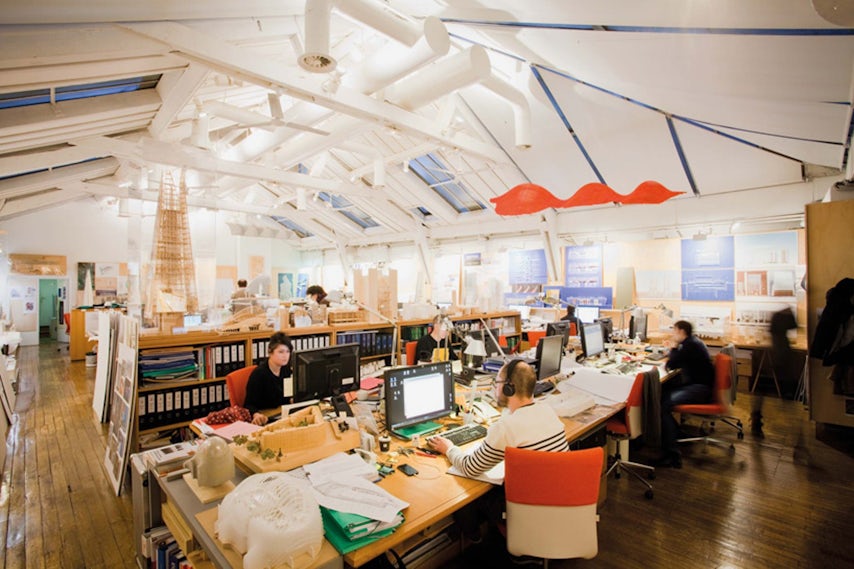Samantha Raburn is a newly licensed architect at Stantec Architecture in Plano, Texas. Her blog, The Aspiring Architect, recounts her journey to become qualified and acts as an insightful guide to all those following a similar path into the profession.
When graduation starts looming around the corner, most architecture students start making their list of firms they may want to work for after graduation. The list could include “starchitects,” firms in Architectural Record or firms their professors have suggested. However, when making this list, it’s important to dive a little deeper than just nice renderings you see on their website or the popular firm name. One of the best pieces of advice I’ve heard for interviewing is that you should be interviewing the firm just as much as they are interviewing you. Interviews should be a two-way street — and if you treat it like that, you will be more likely to find a firm that is a good fit for you.
So, what questions should you ask? What should you look up on their website? What would help better understand a firm? Here’s a list of the top six things I would consider when choosing an architecture firm.

Bjarke Ingels Group (BIG)’s studio in Copenhagen, Denmark; via BIG
1. Does the firm’s projects and work align with your passions and interests?
- There are many firms that work in multiple sectors — healthcare, airports, educational, hospitality, commercial, etc. — and there are also firms that specialize in just one or two sectors. It’s important to do some research and see what sectors the firm works in to make sure you are interested in their type of work. If a firm does work in multiple sectors, ask if you’ll strictly be working in one sector or if you’ll have the opportunity to move sectors.
- Do you like doing your own renderings and graphics? Ask if the firm does their own or if they send the renderings off to another team or company.
- If you enjoy model-building and digital fabrication, ask if they build models in-house. Do they have a laser cutter or 3D printer?
- Do you know the software they use? If not, ask if they provide opportunities for you to learn their software or for you to utilize software you are familiar with. Some firms will LOVE for you to share the software you know with the entire office.
- Do they work on local projects? Site visits are a great way for you to learn, so it’s handy if they work on local projects that you can visit frequently. If their projects aren’t local, will they send you to visit them?
- Are you into researching and investigating the latest and greatest? Ask if the firm has Research and Development (R+D) teams that you could join.

Studio Gang’s workshop in Chicago, Ill.; via Studio Gang
2. How does the firm operate? How is the office set up?
- Is the firm set up to have a production team and a separate design team? If you want to work in both production (learning construction documents and details) and also design (helping with concepts and schematic design), then this may not be the best setup for you right out of school.
- Is the office set up into studios? Some offices have different principals/associates leading their own studios within the office. Most of the time, this means you get to work on every phase of a project and you also get to know your studio team really well. This setup can have a lot of benefits, but it can have its drawbacks as well if not ran properly.
- Is the office set up with different teams for every project? Some offices put project teams together specifically for each project. You can gain great experience this way because you will likely work under different architects, managers and principals, each offering their own knowledge and skills. Again, this can have its advantages and disadvantages.

The office of Tatiana Bilbao, Mexico City, Mexico; via designboom
3. Do they offer professional development and growth opportunities?
There are many ways firms can support you and encourage you throughout your career.
- Do they pay for employees to take the Architect Registration Exams (AREs) or certification for Leadership in Energy and Environmental Design (LEED)? Do they offer study materials or have a study group in the office? Will they pay for you to attend seminars/classes on each ARE?
- Do they pay for your membership in the AIA, USGBC, ULI, etc.? Will they pay for you to attend a convention, whether its for leadership training, software skills or sustainability, etc.?
- Do they offer in-house training for new/updated programs, rendering, leading projects teams, etc.?

Studio Gang’s studio in Chicago, Ill.; via Studio Gang
4. Is their salary and benefit package as good as other firms?
I know this is a hard one to figure out, but don’t be afraid to ask some of your friends that graduated in the last couple of years what they started at and what benefits to be looking for. DON’T UNDERVALUE YOURSELF. You worked hard to earn your degree(s) and to be called a professional — don’t forget that when you get a low offer.
- Do a little research. One helpful tool to get a decent idea of average salaries in your firm’s area is the AIA Salary Calculator.

Renzo Piano Building Workshop, Paris, France; via designboom
5. What’s their studio culture like?
I think many of us would say that one of our favorite things about architecture school was the studio culture. Well, even in the real world, studio culture is just as important. My husband and I both say how lucky we are to have a great studio culture at each of our firms — good people, wonderful learning environment, encouraging leadership. Sometimes you can pick up on a firm’s studio culture when they give you an office tour.
- Pay close attention to what’s going on around you. Are people talking? Do you see an architect teaching an intern about a project detail? Is each person in their own cubicle secluded from others? Are any teams huddled together sketching? Do you see any smiles? I know it sounds silly, but try to pick up on their studio culture as much as possible. Does that culture fit you?

The studio of Tadao Ando Architect & Associates, Osaka, Japan;via designboom; photographs by Kaita Takemura
6. Do their values align with your values?
This last one can be crucial. I’m very career-oriented, but I’m also very family-oriented. I wanted to find a firm that shared those same values of a good work/life balance. I also care deeply about being involved in my community, and I wanted a firm that would support that. So what’s important to you? What do you value most in your career?
- Are they known for having a good work/life balance? Or do they push 60-plus-hour weeks on a normal basis?
- Do they encourage and support getting involved in your community, whether through the AIA, USGBC or other organizations? Do they work on pro bono projects?
- Does their work align with what you value and love about architecture?
If you do a little research and ask some of these questions during interviews, you should have a much easier time deciding if a firm is right for you. Remember, interviews are a two-way street. Find the firm that is a good fit for both of you.
Architects: Want to have your project featured? Showcase your work through Architizer and sign up for our inspirational newsletters.
This article first appeared on The Aspiring Architect.









